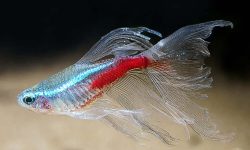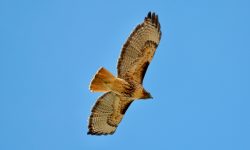The dazzling tail feathers of the male peacock are among the most iconic sights in the animal kingdom. With shimmering “eyes” and iridescent colors, the peacock’s tail looks like a living painting. But why do peacocks have such large, elaborate tails? Is it just about beauty—or is there real science behind the spectacle?
In this article, we explore how evolution, biology, and physics come together to shape one of nature’s most extraordinary features.

What Exactly Is the Peacock’s “Tail”?
The long, colorful display feathers we often call the “tail” are actually part of the train—a group of elongated upper tail coverts. These feathers can stretch up to six feet long, fanning out into a dramatic arc filled with vivid eye-like patterns.
While they may look impressive, these feathers don’t help the peacock fly. In fact, they can make movement more difficult. So, why has evolution kept them around? The answer lies in sexual selection—a powerful evolutionary force that rewards beauty, not just survival.
Darwin’s Dilemma: The Puzzle of the Peacock’s Tail
When Beauty Seems to Defy Survival
Even Charles Darwin was baffled by the peacock’s tail. He confessed that its extravagant display made him feel “sick,” as it appeared to contradict natural selection. How could such an unwieldy, conspicuous feature help a bird survive?
The answer came with his second great idea: sexual selection. Some traits don’t evolve to help an animal avoid danger—they evolve to help it win mates. The peacock’s tail may hinder escape, but it boosts reproductive success, which is evolution’s ultimate measure.
Females Choose the Most Impressive Tails
In peafowl courtship, peahens drive evolution. They reliably choose peacocks with the largest, most symmetrical trains and the highest eyespot count. This consistent preference fuels runaway selection—an evolutionary process where traits become increasingly exaggerated over generations.
What may look merely decorative is, in fact, a powerful evolutionary signal. The peacock’s tail is not just showy—it’s a long-tested advertisement of genetic fitness and reproductive success.
What the Peacock’s Tail Really Communicates
An Honest Signal of Strength and Health
Growing and carrying such a massive tail is a biological burden. It takes energy, good nutrition, and a strong immune system. That means only the healthiest males can afford to grow and maintain such a display.
In evolutionary biology, this is known as the “handicap principle.” The tail acts as a costly but honest signal: “I’m so fit, I can survive even with this huge handicap.” Females, in turn, select these high-quality males to pass on good genes to their offspring.
Symmetry Matters
Peahens instinctively favor males with evenly spaced, symmetrical eyespots on their tails. This preference isn’t just aesthetic—symmetry is a biological signal. It reflects genetic stability, good nutrition, and healthy development during growth. In evolutionary terms, a symmetrical train hints at a mate capable of producing robust, resilient offspring, making it a key factor in sexual selection.
How Do Peacock Tails Get Their Color?
The Secret of Structural Coloration
Despite their brilliant hues, peacock feathers contain no actual blue or green pigment. Their dazzling appearance comes from structural coloration—a phenomenon where microscopic layers within each feather interact with light. These nanostructures bend, reflect, and scatter light in precise ways, generating iridescent colors that shift with the viewing angle.
As the peacock fans and moves his elaborate train, these light interactions produce a dynamic shimmer—a living kaleidoscope that changes in real time. This optical illusion isn’t just beautiful; it’s a powerful evolutionary signal, nearly impossible for potential mates—or rivals—to ignore.
The Sound of Attraction
A peacock’s courtship display isn’t just visual—it’s acoustic too. As the male fans and shivers his tail feathers, he creates a soft, rhythmic rustling. These vibrations are more than just background noise—they’re a form of communication.
Research shows that these feather vibrations can produce low-frequency sounds, some potentially in the infrasound range, which lies below the threshold of human hearing. While we may not perceive them, other peafowl likely can—through either subtle auditory cues or body-sensing mechanisms.
This means the peacock’s display engages multiple senses—sight from shimmering plumage, sound from feather vibrations, and motion from the tremble itself. Together, they form a rich, multisensory signal that’s hard for females to ignore.
The Trade-Off: Beauty at a Cost
The peacock’s extravagant tail is a textbook example of evolutionary trade-offs. While visually stunning, this ornate display comes with real biological costs. The long, heavy train makes flight more cumbersome, reducing agility and slowing escape from predators. Additionally, growing and maintaining such elaborate feathers demands high energy input and nutrient reserves, especially during molting season.
The tail’s bright colors and large surface area also increase exposure to parasites and pathogens, creating more opportunities for infection. Yet despite these drawbacks, natural selection has preserved this feature because of its overwhelming advantage in sexual selection. Females consistently prefer males with larger, more symmetrical tails—traits that may signal overall genetic fitness.
In essence, the peacock’s tail isn’t built for survival—it’s built for attraction. It helps males win mates, not battles, illustrating how beauty can evolve even when it compromises other aspects of fitness.
Not All Peacocks Are the Same
Peafowl are not a single uniform species—there are three distinct types, each shaped by different environmental pressures and mating systems:
The Indian Peafowl (Pavo cristatus) is the most familiar, known for the iconic iridescent blue plumage and elaborate fan-shaped tail used in courtship displays. Native to the Indian subcontinent, this species evolved in open forests and farmlands where visual signaling works best.
The Green Peafowl (Pavo muticus) of Southeast Asia is taller, slimmer, and cloaked in shimmering green and gold feathers. Unlike its Indian cousin, both sexes look more similar, and the males’ displays are less exaggerated—possibly an adaptation to denser forest habitats, where visibility is limited and stealth matters more.
The Congo Peafowl (Afropavo congensis), from the rainforests of Central Africa, is the most subdued. Lacking the ornate tail altogether, this species reflects a very different evolutionary path, where flashy traits may have been selected against due to thick vegetation or increased predation risks.
These differences aren’t just cosmetic—they represent divergent solutions to the same challenge: how to attract a mate without compromising survival in different ecological contexts.
More Than Just a Pretty Bird: Cultural and Symbolic Power
The peacock has long captured the imagination of humans. In many cultures, it represents pride, immortality, and divine beauty. In India, it is even the national bird and a symbol of nobility and protection.
But beyond mythology, the peacock’s tail is a scientific marvel—a perfect example of how beauty can evolve not in spite of nature’s rules, but because of them.
Conclusion: A Masterpiece of Evolution
The peacock’s tail is not just a decorative flourish. It is the result of millions of years of evolution, shaped by female choice, biological signaling, and the physics of light. Every feather, every eyespot, and every shimmering wave is part of a complex language of attraction written in biology.
So the next time you see a peacock fan his tail, know that you’re witnessing more than beauty—you’re watching evolution in action.






